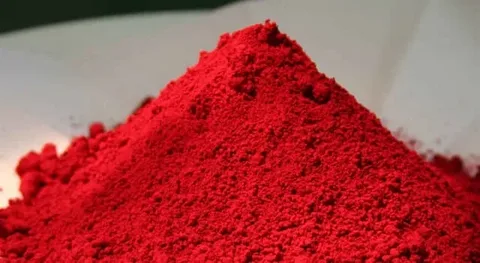The United States Food and Drug Administration (FDA) has recently taken a decisive step by banning Red Dye No. 3 from foods. This move comes as part of ongoing efforts to ensure public health and safety in light of growing concerns about the potential risks associated with certain artificial food additives. In this article, we will delve into the details of this ban, explore the reasons behind it, and examine its implications for consumers, manufacturers, and the food industry at large.
What is Red Dye No. 3?
Red Dye No. 3, also known by its chemical name erythrosine, is a synthetic dye commonly used to impart a bright cherry-red color to a variety of food products. It belongs to a class of synthetic dyes derived from petroleum and is recognized by its vivid red hue. For decades, it has been a staple ingredient in many candies, baked goods, gelatin desserts, and even certain medications and cosmetics.
Despite its widespread use, Red Dye No. 3 has been a controversial additive. Its safety has been the subject of scrutiny for decades, with numerous studies raising questions about its potential effects on human health.
Why Has the FDA Banned Red Dye No. 3?
The FDA’s decision to ban Red Dye No. 3 is primarily based on scientific evidence suggesting that the dye may pose health risks, particularly its potential to cause cancer. The following points summarize the key reasons for the ban:
- Carcinogenicity in Animal Studies: Research conducted on laboratory animals has shown that exposure to high doses of Red Dye No. 3 can lead to the development of tumors in the thyroid gland. While these studies were conducted on animals and involved doses higher than typical human exposure, they raised significant concerns about the dye’s safety.
- Classification as a Carcinogen: The International Agency for Research on Cancer (IARC), an arm of the World Health Organization (WHO), has classified Red Dye No. 3 as a possible human carcinogen. This classification underscores the potential risks associated with prolonged or high-level exposure.
- Existing Restrictions: Interestingly, the FDA had already banned Red Dye No. 3 from use in cosmetics and topical medications in 1990 due to the same cancer concerns. However, its use in food products was allowed to continue, which has long been a point of contention among consumer advocacy groups.
- Consumer Advocacy: Organizations such as the Center for Science in the Public Interest (CSPI) have been vocal in advocating for the ban of artificial dyes, including Red Dye No. 3. They have highlighted studies linking artificial dyes to behavioral issues in children and potential long-term health risks.
Implications for the Food Industry
The FDA’s ban on Red Dye No. 3 has significant implications for the food industry, as it affects a wide range of products. Manufacturers that rely on this dye to create vibrant, eye-catching colors will now need to find alternatives. Here are some key points to consider:
- Reformulation of Products: Food manufacturers will need to reformulate their products to replace Red Dye No. 3 with alternative coloring agents. While there are other synthetic and natural colorants available, finding a substitute that matches the exact hue and stability of Red Dye No. 3 may prove challenging.
- Cost Implications: Reformulating products can be costly, especially if manufacturers opt for natural colorants, which are often more expensive than synthetic dyes. These costs may ultimately be passed on to consumers.
- Labeling Changes: Companies will need to update their ingredient labels to reflect the removal of Red Dye No. 3 and the addition of new colorants. This process can be time-consuming and may require regulatory approval in some cases.
- Innovation in Natural Colorants: The ban may spur innovation in the development of natural colorants derived from sources such as fruits, vegetables, and spices. Ingredients like beet juice, turmeric, and paprika extract are already gaining popularity as natural alternatives.
How Does This Ban Impact Consumers?
For consumers, the ban on Red Dye No. 3 represents a step forward in the quest for safer food. Here’s how it could impact the average shopper:
- Increased Safety: By removing a potentially harmful additive from the food supply, the FDA is reducing the risk of long-term health issues associated with exposure to carcinogenic substances.
- Shift Towards Natural Ingredients: As manufacturers move away from artificial dyes, consumers may notice an increase in products made with natural colorants. This shift aligns with the growing demand for clean-label and minimally processed foods.
- Potential Price Changes: While the transition to natural colorants may result in slightly higher prices for some products, many consumers are willing to pay a premium for items perceived as healthier and more natural.
- Awareness of Food Additives: The ban serves as a reminder for consumers to be vigilant about the ingredients in their food. It may prompt individuals to read labels more carefully and make informed choices about the products they purchase.
What Alternatives to Red Dye No. 3 Are Available?
Replacing Red Dye No. 3 with safer alternatives is a priority for the food industry. Some commonly used alternatives include:
- Natural Colorants: Extracts from fruits and vegetables, such as beetroot, pomegranate, and hibiscus, provide vibrant red hues without the health risks associated with synthetic dyes.
- Other Synthetic Dyes: While some synthetic dyes are still deemed safe by regulatory authorities, they are not without their own controversies and potential risks.
- Food Technology Innovations: Advances in food technology may lead to the development of new, safe, and stable colorants that meet consumer preferences and regulatory requirements.
Global Perspectives on Food Dye Regulation
The FDA’s decision to ban Red Dye No. 3 reflects a broader trend toward stricter regulation of food additives worldwide. In the European Union, for instance, food dyes are subject to rigorous safety assessments, and some synthetic dyes require warning labels indicating potential adverse effects on children’s behavior.
Countries such as the United Kingdom and Norway have taken steps to restrict or eliminate the use of certain synthetic dyes in food products. These international efforts highlight the importance of aligning regulatory practices to protect public health while ensuring the availability of safe and high-quality food.
What’s Next?
The FDA’s ban on Red Dye No. 3 is likely to influence future policy decisions regarding food additives. As scientific understanding of the health effects of synthetic dyes continues to evolve, other artificial colorants may come under scrutiny. Consumer advocacy groups will likely continue to play a pivotal role in pushing for greater transparency and stricter regulations.
For the food industry, the ban presents both challenges and opportunities. While the immediate task of reformulating products may be daunting, it also offers a chance to innovate and cater to the growing demand for natural and clean-label foods.
Conclusion
The FDA’s decision to ban Red Dye No. 3 from foods marks a significant milestone in the ongoing effort to safeguard public health. By eliminating a dye associated with potential carcinogenic risks, the agency is paving the way for a safer and more transparent food system. For consumers, this move is a reminder of the importance of being informed about the ingredients in their food and advocating for healthier choices. As the food industry adapts to this change, it has an opportunity to embrace innovation and meet the rising demand for natural and sustainable products. The ban on Red Dye No. 3 is not just a regulatory action—it is a step toward a healthier future for all.






